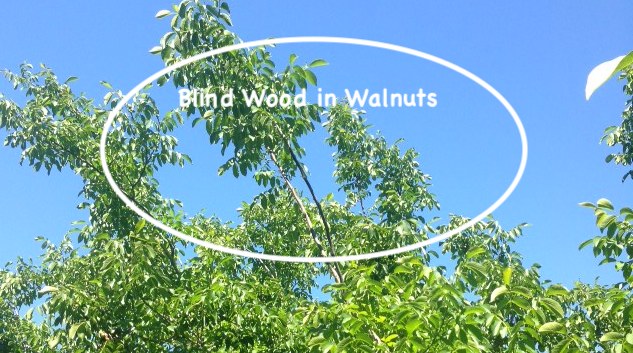
ANOTHER “TELL”
There is a problem in Walnuts with too much synthetic nitrogen is applied.
It’s obvious when too much synthetic nitrogen has been applied by the appearance of blind wood or too much distance between nodes on a given branch. This is a “tell” that anyone can spot.
In our opinion walnuts are one crop that need no additional or supplemental nitrogen if the following plan is implemented.
A diverse cover crop planting -a legume and grass mix followed by humus/compost applications. This operation needs to be done as soon after harvest as possible. Timing is critical. The legumes will feed nitrogen in the organic form, to the companion grasses as well as to the walnut crop. Walnuts have the ability to self-regulate the amount of organic nitrogen it requires. Walnuts do not have the ability to self- regulate the amount of synthetic nitrogen it consumes thus it’s easy to over-apply, thereby creating blind wood. It’s almost everywhere you look, being an exception when you don’t see it. When the plant is taking up excess nitrogen, it crowds out other nutrients that may be vital, as it takes up nitrogen first and there is no more room in the plant. This may partially explain the difficulty in plant nutrient uptake such as potash. This excess nitrogen is not only costly for the material itself but sets the tree up for insect and disease issues. This phenomenon is well documented.
In the past several weeks we have witnessed many walnut orchards with no supplemental nitrogen that have looked excellent and corresponding leaf test results have confirmed this. These same orchards have shown little to no blight issues while following the above-described program. Many of the orchards will not spray for codling moth or mites.
Maneuvers to avoid costly spray programs should be a no-brainer, while not experiencing a yield drag.
This isn’t pie in the sky.
